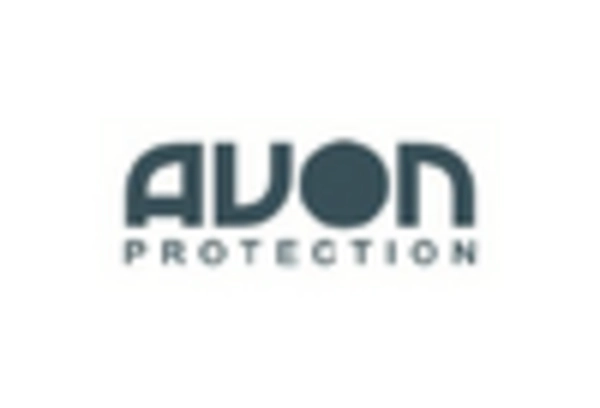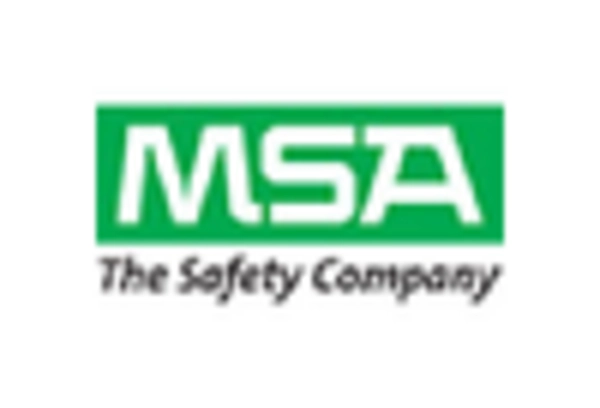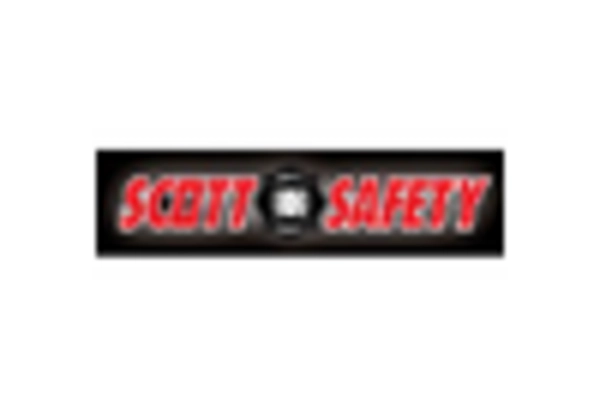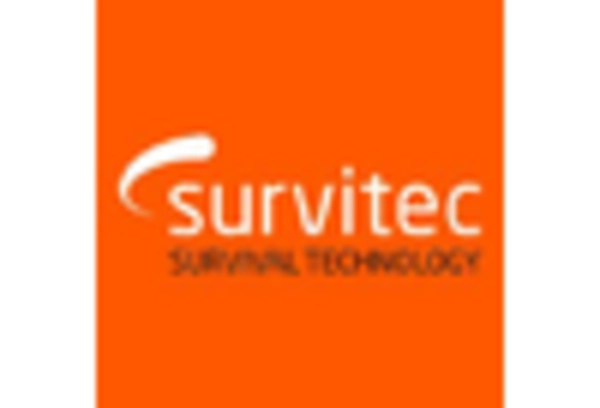Rising Geopolitical Tensions
The military gas-mask market is experiencing growth due to escalating geopolitical tensions, particularly in regions where military engagement is a possibility. As nations bolster their defense capabilities, the demand for protective equipment, including gas masks, is likely to increase. The U.S. military, in particular, has been focusing on enhancing its readiness for potential conflicts, which may lead to an uptick in procurement of advanced gas masks. This trend is underscored by the U.S. Department of Defense's commitment to maintaining a state of preparedness, which could result in a projected market growth of approximately 5% annually over the next few years. Such dynamics indicate a robust demand for military gas masks as essential components of personal protective equipment.
Advancements in Material Science
Innovations in material science are significantly impacting the military gas-mask market. The development of lightweight, durable, and flexible materials enhances the comfort and effectiveness of gas masks. Recent advancements have led to the creation of filters that can provide superior protection against a wider range of chemical, biological, radiological, and nuclear (CBRN) agents. The U.S. military gas-mask market is likely to benefit from these technological improvements, as they align with the military's need for high-performance protective gear. Furthermore, the integration of smart technologies, such as sensors that can detect harmful agents, is expected to drive market growth. This could potentially lead to a market expansion of around 6% over the next five years, as the military seeks to equip its personnel with the best available protection.
Increased Focus on Soldier Safety
An intensified focus on soldier safety and well-being is driving the market. The U.S. military has recognized the critical importance of protecting its personnel from various threats, including chemical and biological warfare. This emphasis on safety has led to increased investments in research and development of advanced gas masks that offer enhanced protection and comfort. The military gas-mask market is projected to grow by approximately 4% annually as defense agencies prioritize equipping soldiers with state-of-the-art protective gear. Additionally, training programs that emphasize the proper use of gas masks further contribute to the market's expansion, as they ensure that personnel are well-prepared to respond to potential threats.
Regulatory Compliance and Standards
Regulatory compliance and evolving standards are playing a crucial role in shaping the military gas-mask market. The U.S. military is subject to stringent regulations regarding the quality and performance of protective equipment. As these standards evolve, manufacturers are compelled to innovate and enhance their products to meet the requirements. This drive for compliance not only ensures the safety of military personnel but also stimulates market growth. The military gas-mask market is expected to see a growth rate of around 3% as companies invest in research and development to align with new regulations. This focus on compliance may lead to the introduction of more advanced and effective gas masks, further solidifying their importance in military operations.
Emerging Threats and Warfare Tactics
The emergence of new threats and evolving warfare tactics influences the market. As asymmetric warfare becomes more prevalent, the need for versatile and effective protective equipment is paramount. The U.S. military is adapting to these changes by investing in advanced gas masks that can protect against a variety of threats, including unconventional warfare scenarios. This shift in focus is likely to drive market growth, with projections indicating an increase of approximately 5% in the coming years. The military gas-mask market is thus positioned to respond to the changing landscape of warfare, ensuring that personnel are equipped to handle diverse and unpredictable threats.

















Leave a Comment